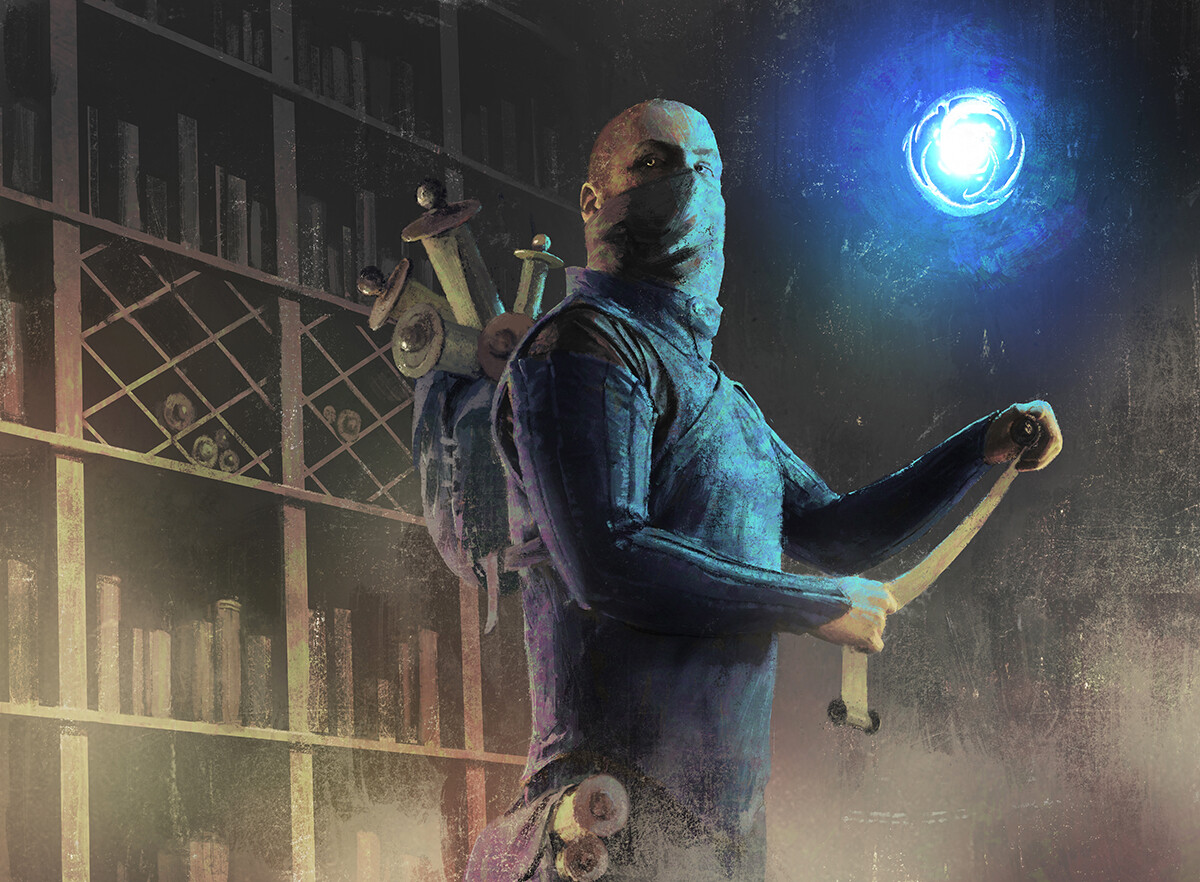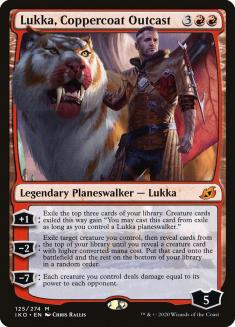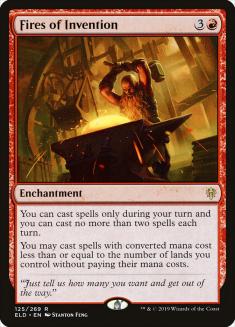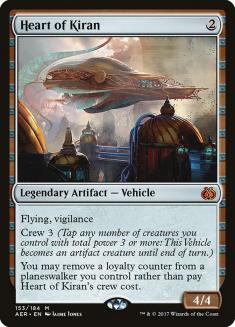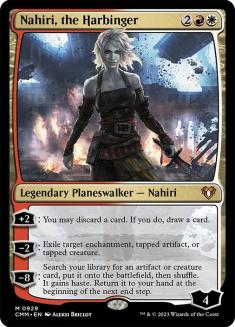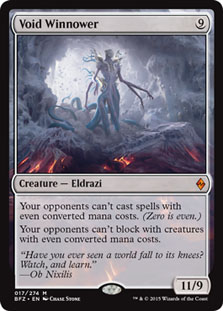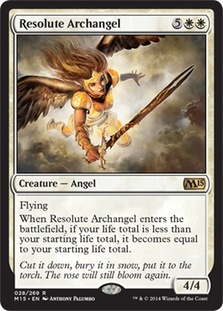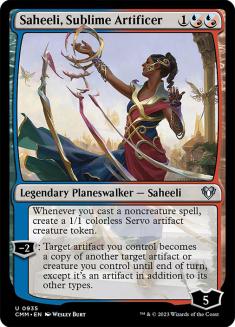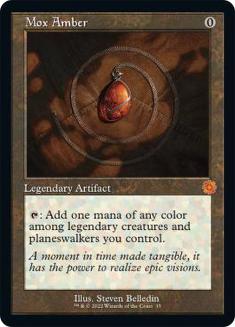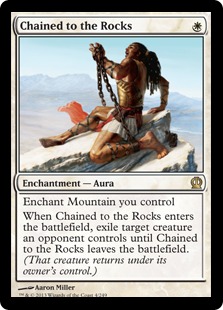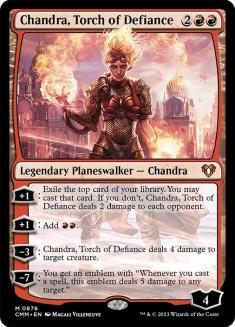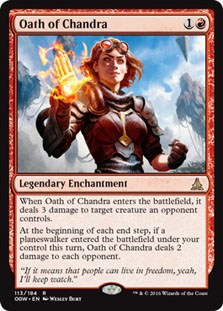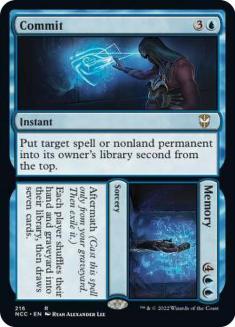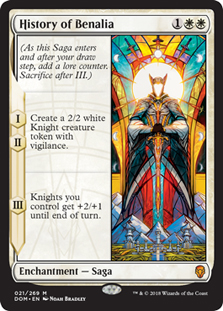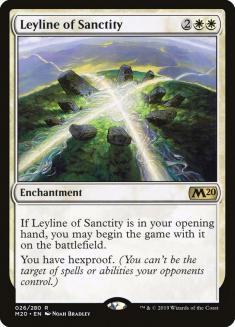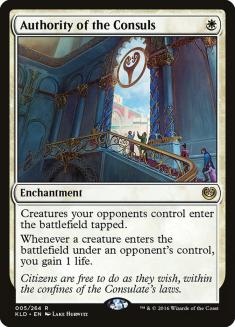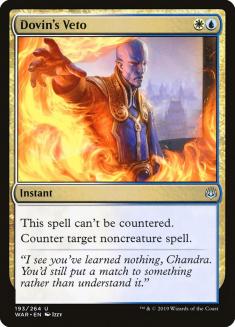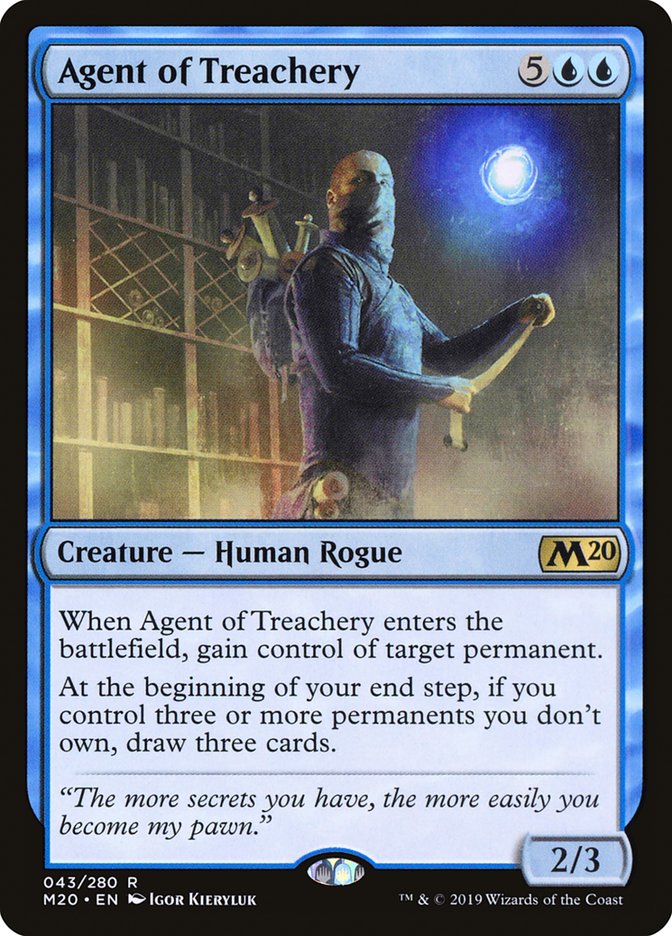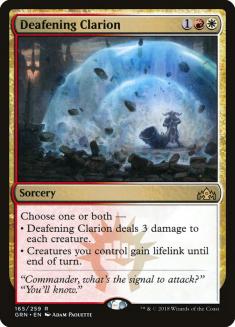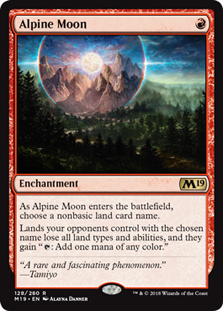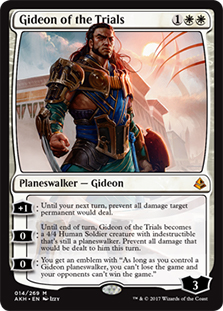When a Standard deck is powerful enough, it’s not uncommon for the same strategy to creep back into older formats. In this case, Yorion Jeskai Lukka has become the best deck in Pioneer, even though it picked up very little.
Creatures (3)
Planeswalkers (17)
- 2 Nahiri, the Harbinger
- 3 Gideon of the Trials
- 4 Teferi, Time Raveler
- 4 Narset, Parter of Veils
- 4 Lukka, Coppercoat Outcast
Lands (34)
Spells (26)

If you’re familiar with the Ikoria Standard version of the deck, you’ll understand what this deck is capable of. It’s a fairly straightforward midrange deck except for Lukka, Coppercoat Outcast and Yorion, Sky Nomad. Both of them are responsible for the vast majority of difficult decisions you’ll face in your games.
Trying to connect an expensive, sorcery-speed Polymorph effect on one of your creatures is more difficult than you might think but it’s not the only way for you to win the game. Thankfully, Heart of Kiran and Gideon of the Trials are safe from most removal and you have Teferi, Time Raveler to protect your combo. You can also uptick Lukka when your opponent doesn’t have enough power on the battlefield.
Without Teferi on the battlefield, your opponent will have to keep mana open to threaten a removal spell. At that point, you can develop in other ways rather than exposing your Lukka. This gives the deck a Splinter Twin feel and you pick up percentage points just by sheer virtue of having that interaction in your deck.
Fires of Invention is the sneaky way to get a Lukka activation. You can play both a creature and a Lukka on the same turn, which isn’t easy for your opponents to play around. Yorion also gives you access to a creature to Lukka away.
Yorion is an alternate win condition, value engine, and combo enabler. Sometimes you’ll deploy it for a couple extra cards, but other times you untap with Fires of Invention, cast Lukka, find Agent of Treachery, cast Yorion exiling a bunch of things (including Fires), and use your mana to cast yet another spell. You don’t lose those games and a single Agent of Treachery might not be enough in those scenarios. That’s why you play Yorion.
Other than that, this is a midrange value deck that will eventually bury its opponent in card advantage.
The Decklist
I’m going to sell you on three main ideas:
- Play Heart of Kiran
- Play Nahiri, the Harbinger
- Don’t sideboard additional Lukka targets
Heart of Kiran is a cheap threat that attacks and blocks well and is a potential creature for Lukka. You might think Heart of Kiran would dominate in a world of three-mana planeswalkers but that’s only somewhat true. Although Heart pressures Narset, a Teferi minus or Gideon plus shuts down its offensive capabilities.
Still, you’re forcing them to minus Teferi on your Heart instead of their Fires later, plus you can recast the Heart to start threatening them again. It also means that Gideon isn’t attacking you or your planeswalkers.
The real reason to play Heart of Kiran is because it’s cheap, proactive, and has a huge body that’s both an effective clock and a defensive tool. You could play Baffling End but Heart of Kiran will give you far more mileage.
Of all the cards in Modern, Nahiri, the Harbinger is one of the cards that gets jammed into decks more often than it should. I’m surprised this trend hasn’t taken off in Pioneer and I’m especially surprised that very few people are playing it in this deck. Not only is it incredible in a way that Elspeth Conquers Death isn’t, it’s a backdoor way into setting up Agent of Treachery.
Nahiri is a filtering tool, a fine card against aggression, and the best response to an opposing Fires of Invention. Elspeth Conquers Death is cute with Teferi and Yorion but is severely lacking in a format where Lurrus dominates.
With your sideboard already being down a card thanks to Yorion, it pains me to see sideboards that have copies of Void Winnower and Resolute Archangel. Lukka into Agent of Treachery doesn’t always get the job done against Lurrus Boros Burn or Lotus Breach but those big creatures aren’t worth the slots. I’d rather sideboard out Lukka against Boros Burn anyway.
The rest of my list is fairly normal. I’m less high on Glass Casket and Supreme Verdict since I prefer Oath of Chandra and Deafening Clarion in a Boros-fueled metagame. There are some larger creatures in the format, such as Grim Flayer and Hangarback Walker, but you can deal with those in other ways.
The third copy of Agent of Treachery isn’t necessary, although it does make games much easier. In Ikoria Standard, you need a way to go over the top and multiple Agent of Treachery triggers allow you to do that. That’s usually untrue for older formats, as they have a higher power level, which means the decks tend to be lower to the ground and more efficient, so going over the top of them doesn’t take much more than a single Agent trigger. However, with the mirror match being a prevalent concern, Pioneer is starting to resemble Ikoria Standard’s sizing and the third Agent is going to be helpful going forward.
I’m playing one less land than everyone else but 34 seems reasonable. Mathematically, it’s slightly more than playing 25 lands in a 60-card deck and that’s about where I want to be. Plus, there’s The Birth of Meletis and Omen of the Sea to help find lands. You could make an argument that many of your lands have cycling, so you’d rather have a higher land count, and I’m sympathetic to that argument. Playing 35 land might be correct but 34 is a reasonable choice, especially once you remove the clunkier lands like Temples and Castle Vantress.
My maindeck contains 55 cards that are Standard legal and the vast majority of those Pioneer-only cards have effective counterparts in Standard. Overall, Pioneer doesn’t give the deck a ton of new tools.
Other Options
I’m interested in trying Saheeli, Sublime Artificer, maybe alongside Mox Amber. There’s almost certainly a way to build the deck that’s leaner. Spell Pierce and Opt work well with Mox Amber curves and both are great alongside Saheeli. Cutting Yorion is a possibility, except any Lukka deck will probably get worse as a result.
If Baffling End isn’t a card you like and you still want to be able to remove larger creatures, you could play Chained to the Rocks. Between shocklands, Triomes, and Fabled Passage, you can get to seventeen Mountains without trying very hard. Adding another basic Mountain or two would also be doable. The fail rate might not be worth the upside but being able to play a planeswalker and removal spell in the same turn would make protecting them much easier.
One of the few things this deck is lacking is powerful four-drops to take advantage of Fires of Invention. For the most part, the Standard decks have lacked this and been able to function just fine. Fires into anything tends to be a reasonably powerful play, even if you’re not explicitly maximizing the potential for power.
If you wanted another option, Chandra, Torch of Defiance could be a good one, although I’d still rather play more Nahiris before I ever add Chandra. Still, Chandra into Oath of Chandra is a classic play.
Extra filtering would be nice and Pioneer offers strong options like Izzet Charm and Oath of Jace. In some games, you have extra resources for Izzet Charm and Oath of Jace and some games you don’t. Playing 80 cards does add some inconsistency to the mix. I can’t imagine losing any game where you’re able to Yorion an Oath of Jace but it’s important to keep in mind the mana curve and how Oath of Jace is poor against opposing Narsets.
A singleton Commit could be sweet. It’s excellent with Fires and Memory combos with Narset to give you another angle of attack.
History of Benalia is decent against Jeskai, Boros, and Lotus Breach but just falls short. It has the same issues as Heart of Kiran in the mirror and the bodies get out-sized by prowess triggers against Boros. It seems to check all the boxes of making tokens and being good with Yorion, plus having a clock against Lotus Breach is nice, but we could do better if we wanted to.
The Sideboard
In an ideal world, we’d be able to construct a sideboard that didn’t have such polarizing options. There are several matchups where I don’t have enough cards to bring in, forcing me to keep suboptimal cards in my deck.
Oddly enough, it’s less of a concern when playing an 80-card deck because it means you’re less likely to draw those mediocre cards. However, it also means when you sideboard in three copies of something like Rest in Peace, you’re less likely to draw those too. Playing 80 cards makes your sideboard less effective overall.
For example, Leyline of Sanctity would be excellent against Lurrus Boros Burn (especially in combination with Deafening Clarion) but it’s not a reliable solution since you won’t have it in your opening hand very often.
Authority of the Consuls is a strong option against the same matchup but one that doesn’t end the game immediately. It’s not uncommon for their prowess creatures to outsize your lifegain, but since Leyline of Sanctity isn’t much of an option and Teyo, the Lightshield is mediocre, it’s the best option we have. While it doesn’t directly win you the game when you cast it, it does buff your life total and mitigate the impact of their haste creatures, which is especially important after a sweeper.
As I mentioned earlier, I prefer to sideboard out Lukka against Boros Burn. If you’re not trying to use Lukka to win the game, how do you actually put away a Boros deck after you’ve stabilized? Well, you have Heart of Kiran, Gideon of the Trials, Shark Typhoon, Castle Ardenvale, and your companion. It’s not as easy to win the game as putting Resolute Archangel onto the battlefield would be, but it’s enough.
Having a threat in your sideboard that allows you to pivot is common for decks like these, but you can’t play creatures because of Lukka unless you plan on sideboarding those out. In the matchups where I’d want to sideboard out Lukka, Spell Queller is probably the best option to bring in, but I’m worried about its negative interaction with your sweepers against Boros to justify it in that matchup. I haven’t found a great option, so I’m content with taking out Lukka in some spots and not having any creatures.
Many players have Mystical Dispute as their sideboard counterspell of choice, mostly due to inertia. Against mirror matches and Lotus Breach, Dovin’s Veto is often superior because of how many nonblue threats both decks have access to.
Rest in Peace will fall in and out of favor as the metagame progresses. At the moment, Abzan Rally and Lotus Breach are popular, both of which require some graveyard hate. Without it, you’ll lose to them a little too often.
In addition to Gideon of the Trials and Narset, I think you want some form of permanent-based disruption against Lotus Breach. Alpine Moon does a much better job of disrupting them than something like Damping Sphere. It’s cheaper, doesn’t affect you, and limits their mana supply in the same way. This is one of the slots where I’d prefer to have a broader answer but the matchup is poor, relatively common, and necessitates a specific answer.
For everything else, there’s Aether Gust.
Sideboarding
Overall, sideboarding with this deck isn’t difficult. It’s very clear when your spot removal or Lukka package won’t be good in a specific matchup, which gives you plenty of options for cards to remove in each matchup. If you’re even in doubt, I would err on the side of keeping the synergy and power of the deck intact.
VS Lotus Breach
Out:
In:
Although Lukka isn’t great in this matchup, it’s better than the spot removal. Your best plan is to become a hybrid Prison / Fish deck. You want to apply pressure with Heart of Kiran or Gideon of the Trials if possible while disrupting them with various permanents and countermagic. It’s not a great plan but it’s the best you’ve got without dramatically altering the contents of your deck.
VS Yorion Jeskai Luuka
Out:
In:
This is probably the most intricate matchup you’ll find in Pioneer. Both players are jockeying for position, hoping to put Agent of Treachery onto the battlefield and run away with the game from there. Using Teferi to bounce tokens in an attempt to keep them away from a Lukka activation is common. I’ve even used Nahiri to blow up the Saga before it could make the token just to keep myself safe.
Should they manage to kill your Agents and Yorion, your best bet is to cast Shark Typhoon and get to work. Using Lukka’s ultimate has even come up. You can also chip them out with Oath of Chandra.
Supreme Verdict can get you out of some really bad spots and Oath of Chandra can be decent at killing Agent of Treachery, which means they can’t blink or bounce it on subsequent turns. Neither card is great in the matchup but they have their uses.
VS Lurrus Boros Burn
Out:
In:
A singleton Dovin’s Veto comes in because I want to cut the entirety of the Lukka package, although keeping a single Agent of Treachery for Nahiri could come up. I’d wager that the game is being won or lost by that point and whether you have access to an Agent won’t be relevant.
VS Dimir Inverter
Out:
In:
Most versions of Inverter play Jace, Vryn’s Prodigy, so you’ll want to keep Oath of Chandra. If you want to get the Supreme Verdicts out of the deck, a couple of copies of Rest in Peace to fight Jace and Dig Through Time are reasonable. Having an answer to their 6/6 flyer can matter, though.
Mystical Dispute is their best sideboard card against you and is mostly irrelevant if you’re able to resolve Fires of Invention. Given their disruption, that’s difficult to do. If you expect more Dimir Inverter, you’ll want to invest in some extra card drawing or filtering.
VS Lurrus Abzan Rally
Out:
In:
Rally the Ancestors and Return to the Ranks are their only ways to beat you, which is why I bring in Dovin’s Veto. Obviously it doesn’t work when you have Fires of Invention, so there might be spots where you’ll want to wait on casting that card.
You could make an argument for Authority of the Consuls but it doesn’t beat any reasonably sized Rally the Ancestors, so I don’t think it’s worth it.

